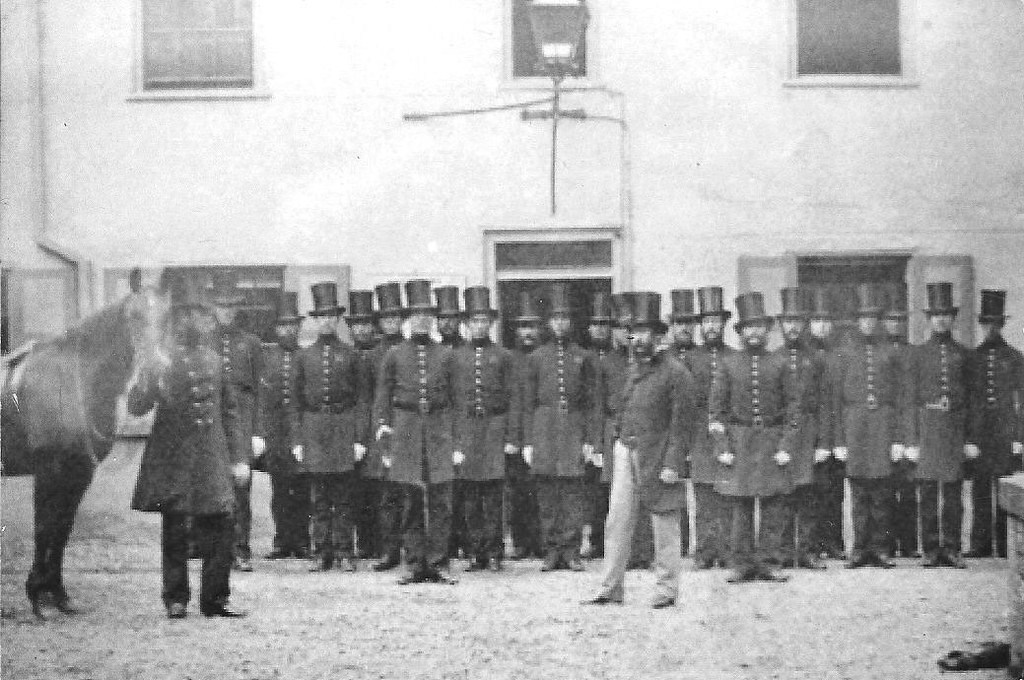The Establishment of the London Metropolitan Police
- June 19th 1829 -
Glasgow had one from 1800. Ireland had the newly established Royal Irish Constabulary. Local authorities had always been in charge of law and order in England but it was felt this was not working. The English public had long been suspicious of a force set up to control them – especially if it was armed. It was felt that it could be used to suppress protests and enforce a military dictatorship. The best known force was in Paris and as the British had been at war with them from 1793-1815 anything that the French had was treated with great suspicion.
The Home Secretary was Sir Robert Peel. He was never the most popular of individuals and could be quite an awkward individual. Queen Victoria called him a “Cold, unfeeling and disagreeable man.” The fact that he disagreed with, and spoke out against, the idea of an annual income for Prince Albert, her husband, probably did not help ease this position. Peel was born in Bury, Lancashire, on 5thFebruary 1758. He attended Harrow and Oxford before becoming an M.P. in 1809. He served as Home Secretary under Lord Liverpool and then the Duke of Wellington.
It was while under the latter that the Metropolitan Police Act was passed in June 1829. The Mayor of the City of London and the Corporation of the City refused to take part in the process and thus the City itself was exempt from the jurisdiction of the new police force. Its authority spanned a seven-mile radius from the centre of London, soon extended to 15 miles. The man in charge of the force was responsible to the Home Secretary – a position that held until the establishment of a Mayor of London, Ken Livingstone, in May 2000.
 The headquarters of the new force was 4 Whitehall Place. This was accessed through a small yard off a street called Great Scotland Yard. In 1890 the HQ moved to Victoria Embankment and was called “New Scotland Yard”.There were 17 divisions and each had 4 inspectors and 144 constables. They first patrolled the streets on September 29th1829 in their blue tail coats and top hats. The government did not want them to be seen as an armed force or as conspicuous as soldiers in their red uniforms. New recruits had to be a minimum of 5ft 7” aged between 20 and 27, be literate and have no criminal history. They carried a wooden truncheon, in a long pocket at the rear of their coats, a pair of handcuffs and a wooden rattle to raise the alarm. This was replaced by a whistle in 1880. They were called ‘Peelers’ or ‘Bobbies’ after the Home Secretary who brought them into being.
The headquarters of the new force was 4 Whitehall Place. This was accessed through a small yard off a street called Great Scotland Yard. In 1890 the HQ moved to Victoria Embankment and was called “New Scotland Yard”.There were 17 divisions and each had 4 inspectors and 144 constables. They first patrolled the streets on September 29th1829 in their blue tail coats and top hats. The government did not want them to be seen as an armed force or as conspicuous as soldiers in their red uniforms. New recruits had to be a minimum of 5ft 7” aged between 20 and 27, be literate and have no criminal history. They carried a wooden truncheon, in a long pocket at the rear of their coats, a pair of handcuffs and a wooden rattle to raise the alarm. This was replaced by a whistle in 1880. They were called ‘Peelers’ or ‘Bobbies’ after the Home Secretary who brought them into being.
These Bobbies worked seven days a week and covered between seven to ten miles a day on the ‘beat’. They had five days unpaid leave a year were paid £1 a week. To try and stop the public fearing a coercive, illicit and government-led power there were various restrictions put in place for them at first. They were not allowed to vote in elections, had to wear their uniforms off duty as well as on it, to stop the public believing they were being spied upon, could not marry without permission or take a meal with a civilian. Not many of the first constables survived. Indeed, the very first, given the constable number 1, was sacked after only four hours on account of him being drunk and disorderly.
A decade later in 1839 the County Police Act led to the establishment of similar forces around the country. Ironically it was Bury, Robert Peel’s home town, that was one of the very last to establish one. As for Robert Peel he became Prime Minister in 1834 until 1835 but was re-elected in 1841 until 1846. He died on 2ndJuly 1850, aged just 62, three days after falling off his horse on Constitutional Hill. His ideas on policing have developed massively over the years but the idea of the ‘Bobby on the beat’ still rekindles the idea of those first policemen, named after the Home Secretary, who had the foresight and determination to establish the first constabulary to protect its citizens.


